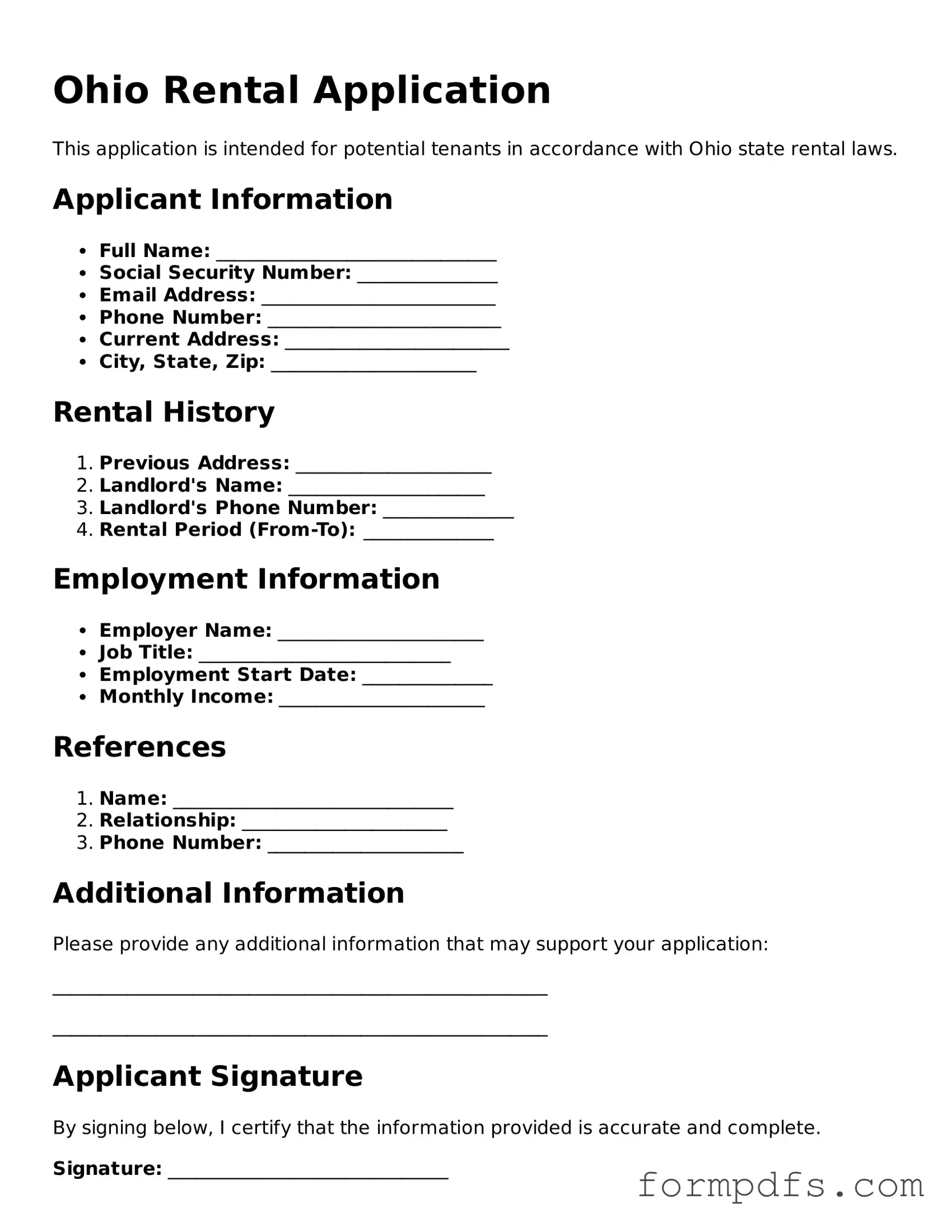What is the Ohio Rental Application form?
The Ohio Rental Application form is a document that potential tenants complete to apply for rental housing. It collects essential information about the applicant, including personal details, rental history, employment information, and references. Landlords use this form to assess the suitability of applicants for their properties.
Who needs to fill out the Ohio Rental Application form?
Anyone interested in renting a property in Ohio must fill out the rental application form. This includes individuals, families, and roommates. Each adult intending to live in the rental unit typically needs to submit their own application.
What information is typically required on the form?
The form generally requires personal information such as the applicant's name, address, phone number, and email. It also asks for employment details, income, rental history, and references. Some applications may request consent for background and credit checks.
Is there a fee associated with the Ohio Rental Application?
Many landlords charge an application fee to cover the costs of processing the application, including background and credit checks. The fee amount can vary, so it is important to confirm this with the landlord or property management before submitting the application.
How long does it take to process a rental application?
The processing time for a rental application can vary. Typically, landlords may take anywhere from a few hours to several days to review applications. Factors influencing this timeline include the number of applications received and the thoroughness of background checks.
Can an application be denied? If so, why?
Yes, a rental application can be denied for various reasons. Common reasons include poor credit history, insufficient income, negative rental history, or failing to provide accurate information on the application. Landlords are generally required to inform applicants of the reason for denial.
What should I do if I am denied a rental application?
If an application is denied, the applicant should receive a notice explaining the reasons for the denial. It is advisable to review this information and, if necessary, address any issues, such as correcting inaccuracies or improving credit. Applicants can also request a copy of their credit report to understand any negative factors.
Can I appeal a denial of my rental application?
While there is no formal appeal process, applicants can communicate directly with the landlord or property manager to discuss the denial. They may provide additional information or documentation that could influence the landlord's decision. However, the final decision rests with the landlord.
Are there any protections for applicants under Ohio law?
Yes, Ohio law provides certain protections for rental applicants. Landlords must comply with fair housing laws, which prohibit discrimination based on race, color, religion, sex, national origin, familial status, or disability. Applicants who believe they have been discriminated against may seek assistance from local fair housing agencies.
